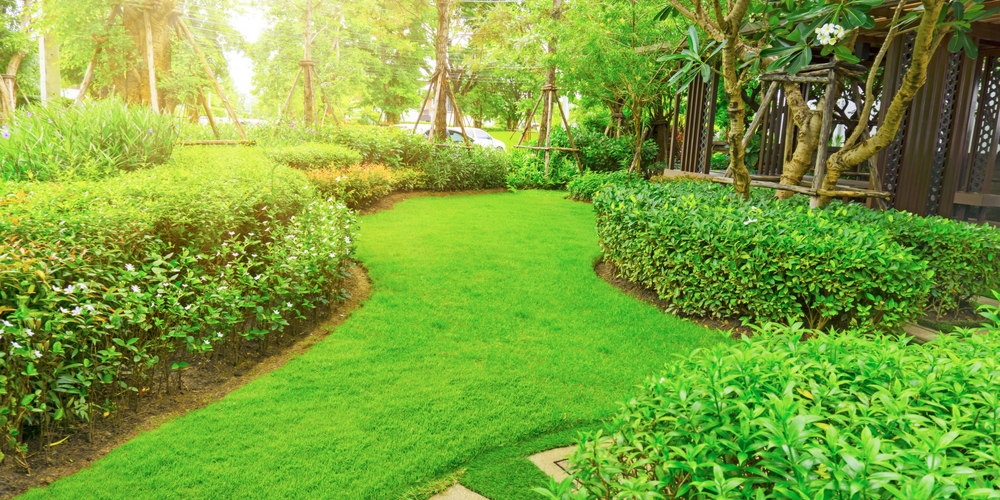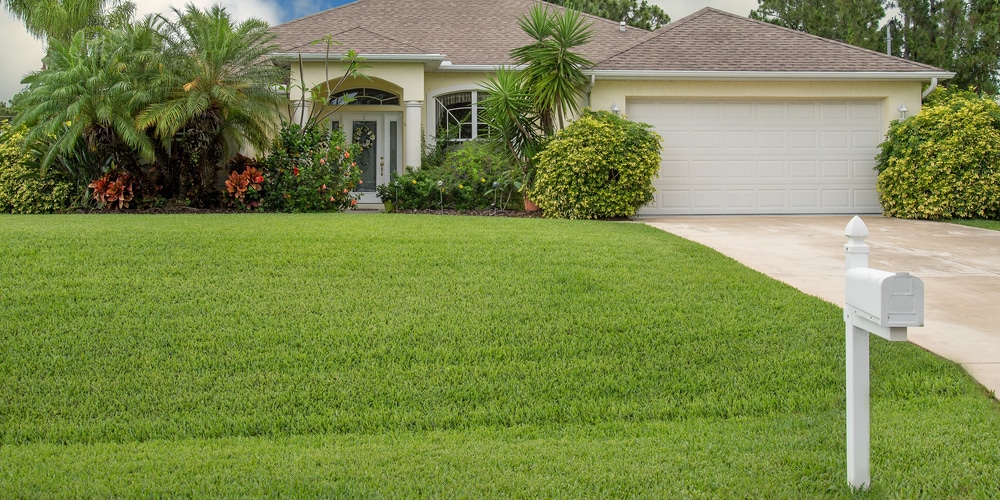Maybe you already know that fertilizing your lawn is something you must do. After all, it helps keep it healthy and promotes its growth. But did you know that to get the dark green turf you might have seen in design magazines, you also need to apply iron to your grass?
This essential nutrient is not only a crucial element of humans’ diet. Indeed, it is also something plants need to thrive. If you want to learn when is the best time of the year to apply iron to your lawn, keep reading. Here, we collected all the information you must have on hand on this topic.
What Does Iron Do To Your Lawn?
Applying iron to your turfgrass can make your lawn healthier. Additionally, it will deepen its green, which always has an appealing aesthetic effect. Indeed, if your turf looks discolored or yellow, iron deficiency might be the cause.
Contrary to fertilizers, iron supplements do not boost growth or require the application of extra moisture. Instead, they will improve the overall health of your turf.
Iron should be essential to your turf’s maintenance when growing fescue or bluegrass. Indeed, it will help these cold-season grasses to stay green even during the summer months.
Additionally, iron can contribute to removing moss from your lawn. While it isn’t necessarily negative to have it around your garden, moss might lead to root rotting and other diseases. Preventing it from spreading on your lawn is always a good idea.
You can find two iron supplement types on the market: synthetic and organic. The first is usually less expensive and is effective faster. However, they come with the side effect of burning your lawn (if you don’t follow the instructions you find on the product’s label).
Also, such chemicals might stain your grass (or concrete), which might not be ideal. Orange stains might harm the aesthetics of your lawn if you are not careful when using iron fertilizers. So, keep that in mind before deciding to apply a synthetic product.
On the other hand, organic iron fertilizers might take more time to have an effect. However, they won’t harm your turf. Additionally, they will gradually release their nutrients, which will result in better absorption.
When Should You Apply Iron To Your Lawn?
Now that you know more about iron supplements, you might wonder when you should apply them to your turf. Usually, the best time to start adding iron to your lawn is in the spring.
Ideally, temperatures should be between 60 and 70°F. Applying iron during hot weather might not give you satisfactory results. After all, when the temperatures are too high, your grass won’t be able to absorb it effectively.
So, while you can add supplements all year round, applying them during the spring will increase the treatment’s effectiveness.
Also, don’t forget to avoid overdoing it (even if you are using organic products). Remember that your lawn doesn’t require too much iron, and applying more than necessary might cause several development issues. So, if you notice your turf turning yellow, first make sure to follow a regular watering and feeding schedule.
To save yourself some trouble, consider having a soil test before applying any treatment. Also, consider checking your turf’s blades. If the yellowness appears throughout the leaves, the problem might be a nitrogen deficiency. Indeed, iron-deficient grass generally only displays pale color with some green veins.
How to Choose The Best Supplement For Your Yard
Besides choosing between synthetic and organic supplements, you’ll also have to decide whether you prefer liquid or granular. The choice depends on your preferences.
For instance, using liquid iron supplements is usually recommended to beginner gardeners. After all, it is the easiest way to apply a product. Also, they tend to bring quicker results.
Usually, liquid treatments (which also include sprays) will last for about three to four weeks. You can choose among plenty of products: consider visiting your favorite gardening store and ask for suggestions.
Alternatively, you can apply iron supplements in their granular form. Doing so requires more effort from your side (and takes longer). Also, you’ll see results over time.
So, you’ll have to be patient. You can use these supplements if your lawn doesn’t need urgent intervention. If you apply them correctly, you might be able to enjoy long-term benefits from granular iron supplements.

